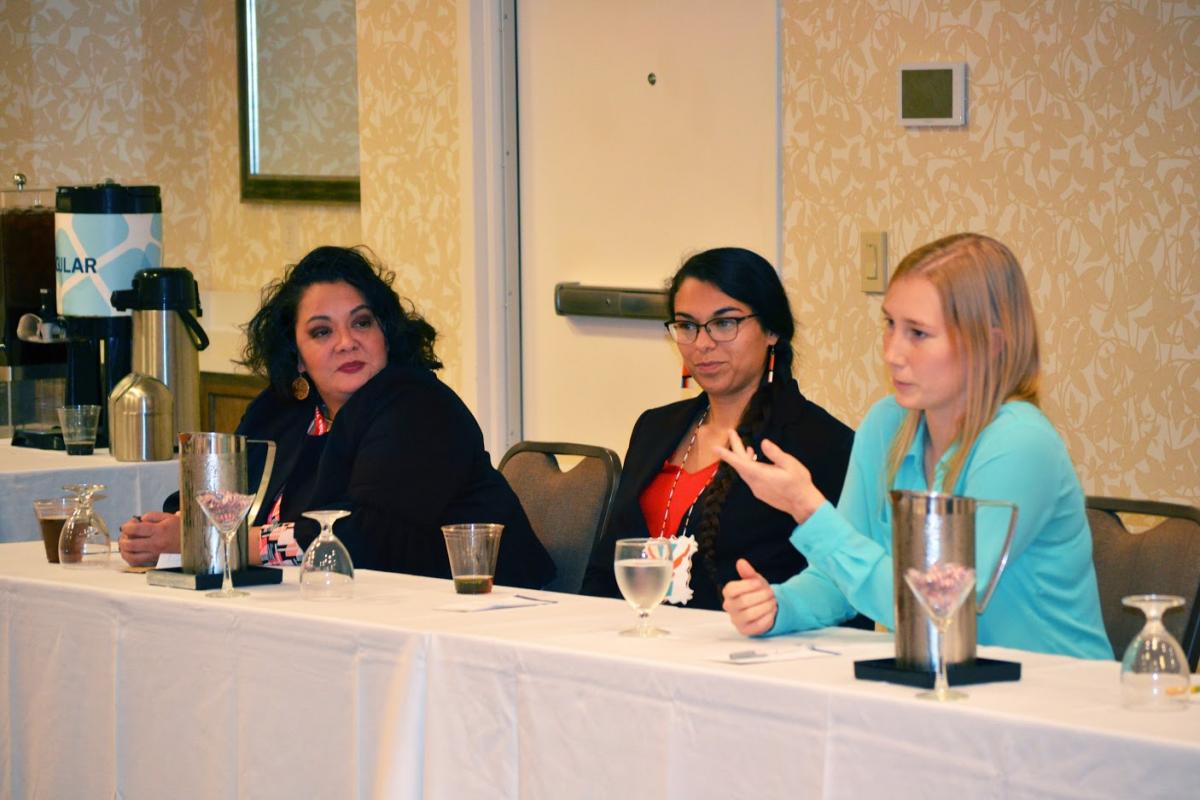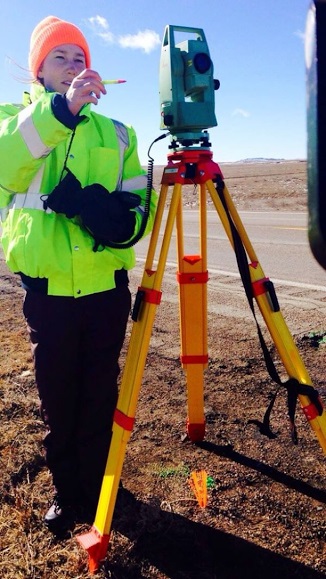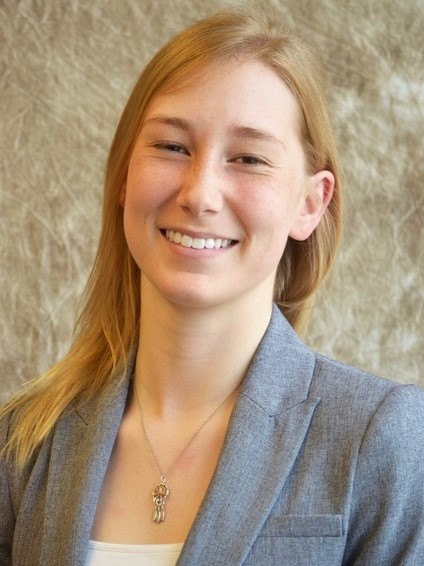Increasing resilience by increasing safety
For NRT master’s student Sydney James, reconstructing automobile accidents is like solving a puzzle, with intriguing solutions that could help Native Americans.
“My recon job, I love because it’s a puzzle,” the civil engineering student says. “And my research is helping—well, hopefully, helping—Native American communities, helping out that underserved population, making a difference.”
An enrolled member of the Ogallala Sioux Tribe of the Pine Ridge Reservation in South Dakota, James focused her master’s project on studying transportation safety in Thurston County, home to the Winnebago and Omaha tribes of Nebraska. She looked at patterns in automobile crashes to determine any common factors leading to them.
“As I started processing the data for Thurston County, I noticed that there is a really big decrease in the number of crashes,” she says. “Generally, that’s what you look for, right? You want there to be a decrease in crashes. That’s good. But the number of fatal crashes is not decreasing.”
As is true for other reservations, the Winnebago and Omaha reservations that comprise all of Thurston County are not required to report crashes the way that other law enforcement agencies do, she says.

“They don’t use the state crash reporting sheet either, and so, there is a nationwide trend that crashes are underreported on Native American reservations,” she says.
James decided to pursue this odd juxtaposition of a lower number of crashes being reported in the county but a relatively high percentage of them being fatal—3 to 8 percent in Thurston County versus 1 to 3 percent elsewhere.
“My suspicion is that those low-level crashes are not being reported but fatals are being reported, which is why we see the increase in fatals but the decrease in injury crashes and property-damage only crashes,” she says.
To confirm or deny her suspicions, she used a geographic information system to analyze the crash data of three similar Nebraska counties, Dixon, Nemaha and Johnson. She found similar numbers in reported annual crashes, but the other three counties reported a substantially lower number of fatalities than Thurston County.
A negative consequence of this for Thurston County is that it does not make a list of priority counties, James says.
“Nebraska chooses 23 counties every fiscal year to dedicate more resources and funding and programming to,” she says. “It’s based off restraint usage and seatbelt use, speed, teen drivers . . . They compare those things in their crashes to the state. Thurston County has not made the list for at least the past two years and, thus, is ineligible for funding.”
James says she is uncertain what may cause the underreporting but she is trying to inform more people about the issue.
“We need more people to understand on and off the reservation these consequences so that we can address them and the real issues to make sure we have a more effective system,” she says.
In January 2021, she presented her findings to the Native American Issues in Transportation committee at the annual meeting of the Transportation Research Board, a division of the National Academy of Sciences, Engineering, and Medicine. She also presented a poster about her findings at the meeting.
That month, as part of the University Transportation Centers Program, she won a 2020 Student of the Year award, along with 39 other students nationwide.

She says she felt heard but hopes that her research “really turns into something.”
As an undergraduate, she carried out a project at Macy, Nebraska, trying to decrease the speed limit on Highway 77 in front of the Nebraska Indian Community College.
“Nothing has happened with that, so that’s frustrating to do something and show a need and then have it go nowhere,” she says. “So, hopefully, this Thurston County project is one of those things that doesn’t sit on a shelf but something can be made of it and we can actually see increased safety.”
Her focus in the NRT has always been on making transportation systems more resilient through increased safety.
“You can’t have resilience if you don’t have safety,” she says. “If you’re worried about road closures through a spill of hazardous material, or people in your community being at risk, you can’t do anything bigger if you’re still worried about your basic needs being met.”
She has accepted a position as an accident reconstructionist, to start after she graduates in May 2021, and says she hopes she can address such transportation safety issues and the larger issue of prevention.
“That’s the thing with all those crashes,” she says. “I can do a really good work-up on them and find out what happened, but at the end of the day, it still happened. People were still injured and killed, so now my interest has shifted a bit to, What can we do to keep that from happening? What can we do to prevent it? Can we suggest other measures to reduce the risk of a crash ever happening so that we don’t lose the people, the goods, anything like that? Crashes are so devastating. How can we reduce them?”
— Ronica Stromberg, National Research Traineeship Program Coordinator



